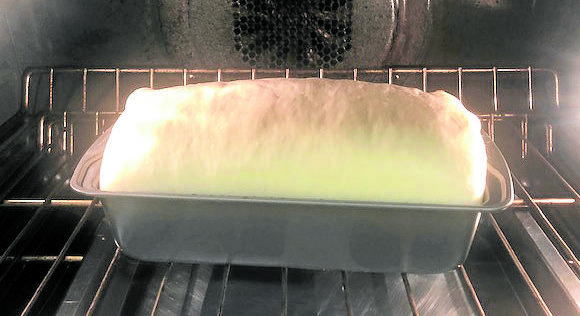
Even if all you have is a kawali or wok with a cover, you can make your own bread at home.
This is according to Johnlu Koa, founder and CEO of The French Baker Group, who is pleased to hear of the increasing number of home bakers during the community quarantine.
Like most professional bakers, Koa says bakery-quality breads are made with some key tools, like a motorized or electric mixer with paddle, hook and ball whisk attachments or an automatic instant bread maker with digital settings.
However, amateur bakers can also come up with delicious breads with the simplest kitchen gadgets, Koa says. “There are several ways to bake bread.
Without the aid of a mixer, a home baker may need some practice to do it by hand in order to achieve success.”
A Dutch oven with a deep casserole and cover can substitute for a conventional oven. “Breads can also be baked using a kawali or wok with a cover.
Bottom heat or conduction heat is sufficient to create an oven effect to bake breads like buns and rolls,” he says.
In response to the baking trend, he is making available bread and all-purpose flours for breadmaking, sold by the kilo, at The French Baker. Whole-wheat flours and instant dry yeast will also soon be available in the same stores.
Since bread baking requires some technical know-how, it pays to do a little research before embarking on a bread project, Koa says.
“Bakers should understand the functionality of ingredients like flour, sugar, salt, yeast, baking powder, water, eggs, milk. They must understand the baking process—from mixing and kneading to rising or proofing the dough to baking, and the principles related to adjusting oven heat when baking.”

Intermediate level
He also addresses the trend of intermediate-level home bakers attempting to make their own sourdough starters. They’re not difficult to develop “as long as the baker understands the process—the whys and the hows,” he says. “Home bakers can easily follow a recipe that is precise and learn from constant practice.”
One must practice hand mixing of dough, and shaping it into balls and loaves. It’s also helpful to learn how to develop new bread variants “based on ingredients that can change their appearance and flavor.”
First-time bread bakers, however, have commercial active dry yeast and instant dry yeast, if they want to avoid the long route of making their own sourdough leaven, he says.
“The difference is simply in how to effectively use them,” says Koa. “Active dry yeast needs to be mixed with some water in order to activate the dried yeast cells. Instant dry yeast doesn’t need to be hydrated, as it can be used straight from the pack and mixed into the flour. It should be the preferred yeast of home bakers.”
Sourdough leaven can be tricky in the hands of an amateur, Koa explains. “The amount of ‘wild yeast’ in the sourdough can vary from baker to baker, due to the manner by which the sourdough has been elaborated or fed with fresh water and flour.”
The big difference is in the outcome. “Sourdough imparts a certain flavor that cannot be achieved with the use of commercial baker’s yeast.”
Ultimately, breadmaking requires patience and practice. “Don’t give up easily,” says Koa.” Successful breads come from trial-and error-baking.
“Learn from fellow bakers,” he advises. “Read up and research online or offline. Share so that others will share with you. Be adventurous and welcome failures as learning experiences.”
Koa shares a basic white bread recipe below. “This is a bit on the sweet side that’s ideal for sandwich bread and can be eaten alone. I prefer to just knead by hand,” he says.

Basic white bread
287 g bread flour
6 g instant dry yeast
34 g refined sugar
6 g salt
158 ml water
12 ml cooking oil
Combine all dry ingredients and set aside. Combine wet ingredients separately and set aside.
In a stainless bowl, combine dry and wet ingredients together and mix by hand until a dough mass forms.
Start kneading until dough becomes elastic or appears to have a smooth surface (15-20 minutes). (Koa uses the stretching and folding method.)
Transfer dough to an oiled bowl, cover with plastic sheet and allow to rest inside a chiller overnight (10-12 hours).
Next day, take dough out and allow to rest at room temperature for 30 minutes for the dough to warm up.
Flatten dough into rectangular shape and roll up to form a log.
Oil sides and bottom of a baking loaf mold (8” x 4” x 2.2”) and transfer dough seam side down.
Cover dough and allow to proof or rise in a warm spot of the kitchen for about 1 hour.
Bake in preheated oven,
175ºC for 25 minutes. Check at 18 minutes for doneness.
Unmold baked bread and allow to cool down before slicing.












































